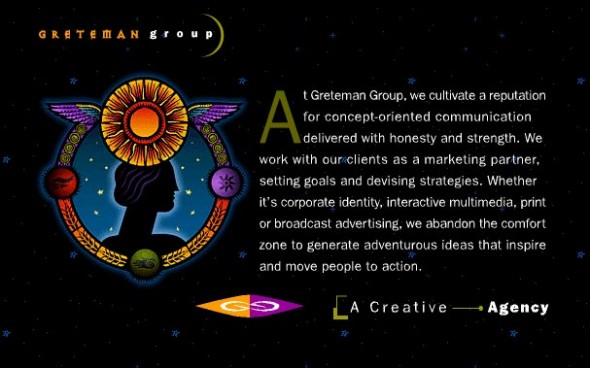WBJ; Q&A: Greteman Group’s Todd Gimlin on 20 years of Web work
07.18.13 · Greteman Group
July 18, 2013
Wichita Business Journal
Emily Behlmann
Todd Gimlin’s field of work has gotten a lot more complicated since he started at the Wichita marketing agency Greteman Group 20 years ago.

Gimlin is Greteman’s senior interactive director, though the nature of that position has changed substantially. He says that at first, his job entailed putting together interactive and multimedia projects that would be handed out on floppy disks or CD-ROMs. Later, in the mid 1990s, he launched Greteman Group’s first website, and now, he works with a team to develop complex Web-based interactive content for a range of clients.
Gimlin reflected on the evolution of the Web during his 20-year career in this Greteman Group blog post. He describes how much more complicated websites have become as businesses expect them to do more. At first, he writes, Greteman Group’s site was optimized for Netscape Navigator. Now, the Greteman team ensures clients’ sites look good across a range of browsers and devices. They worry now about search-engine optimization and interactivity.
“I can say without hesitation that it becomes more of a pain in the ass with each passing year,” he writes.
Here’s a portion of my conversation with Gimlin:
Was there general agreement within the office in the 1990s that the Greteman Group needed a website?
“Since it was so new, it was more like, ‘What is it?’ than ‘Why do we need one?’ It was not costing us millions of dollars to develop a website. … Once everyone in the office agreed that websites weren’t going to go away, I think everyone was on board.”
What was the goal of the first Greteman Group website?

“We tried to be forward-thinking. We saw this as something that was a trend that was going to last, not just a flash in the pan. We decided to put resources into learning everything we could about it. Back then, there wasn’t much to learn about it. It just grew from there.”
Were clients clamoring for websites in the 1990s?
“In the early to mid ’90s, we had to convince clients that they needed one. I don’t think it was a long time after we launched our own site that we got our first paying job.”
What have you and your team done to stay on top of industry changes?
“I have my iPad next to me during the day, and I subscribe to a lot of blogs. I have apps to keep up with the news. I do a lot of experimentation when I have the time to do it. That’s a necessary part of the job now. Back then, you could buy one book and know everything there was to know about building websites. Now, you do need a team, and each person needs to have a specific focus.”
What are some of the most positive changes for business that have come about in the past 20 years?
“The role of websites in the ’90s was just to have a presence — just to be there and give out a certain amount of information about the company. Now, we want our websites to do so much more. We want them to convert visitors to customers. We want to be able to engage with customers through social media. … It’s more of an evolution. Websites are getting smarter all the time. They’re so much more intelligent, more engaging. … It could be the case in the future that websites are smart enough to give a different experience depending on who’s there.”
Do you ever long for the days when work on the Web was simpler?
“In a way, yes, in a way, no. It’s like having a child. … You’re able to look back when the child was a baby and say, ‘That was cute, that was nice,’ but you don’t stop loving your child as they grow up.”
© Wichita Business Journal, 2013